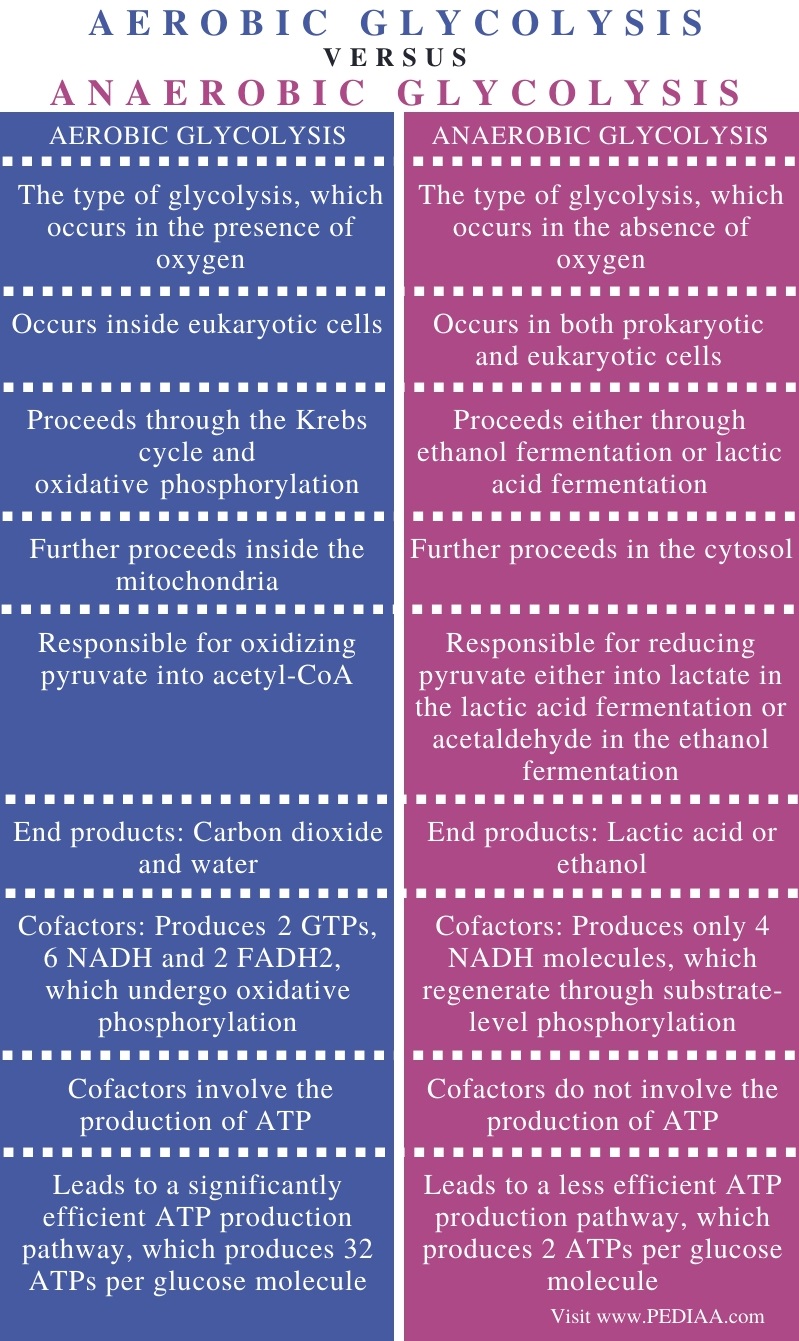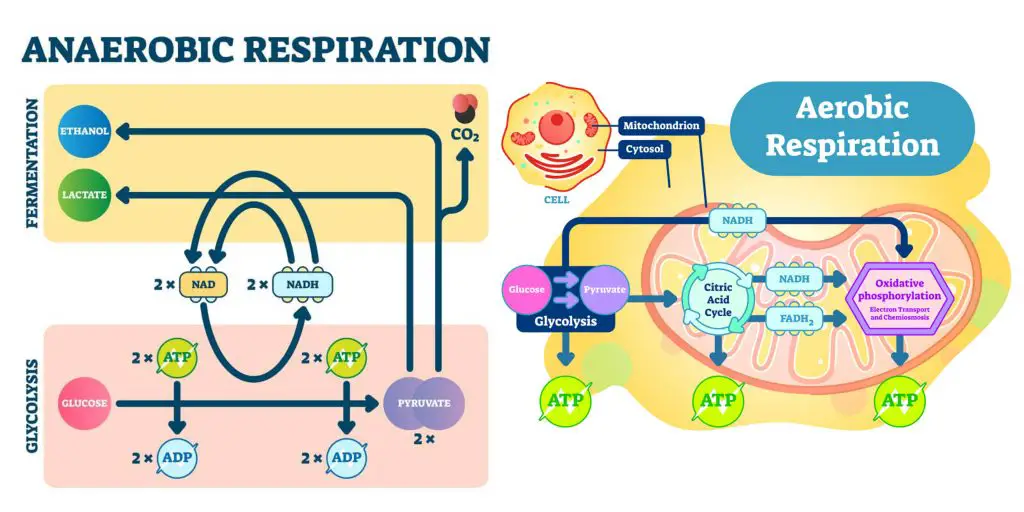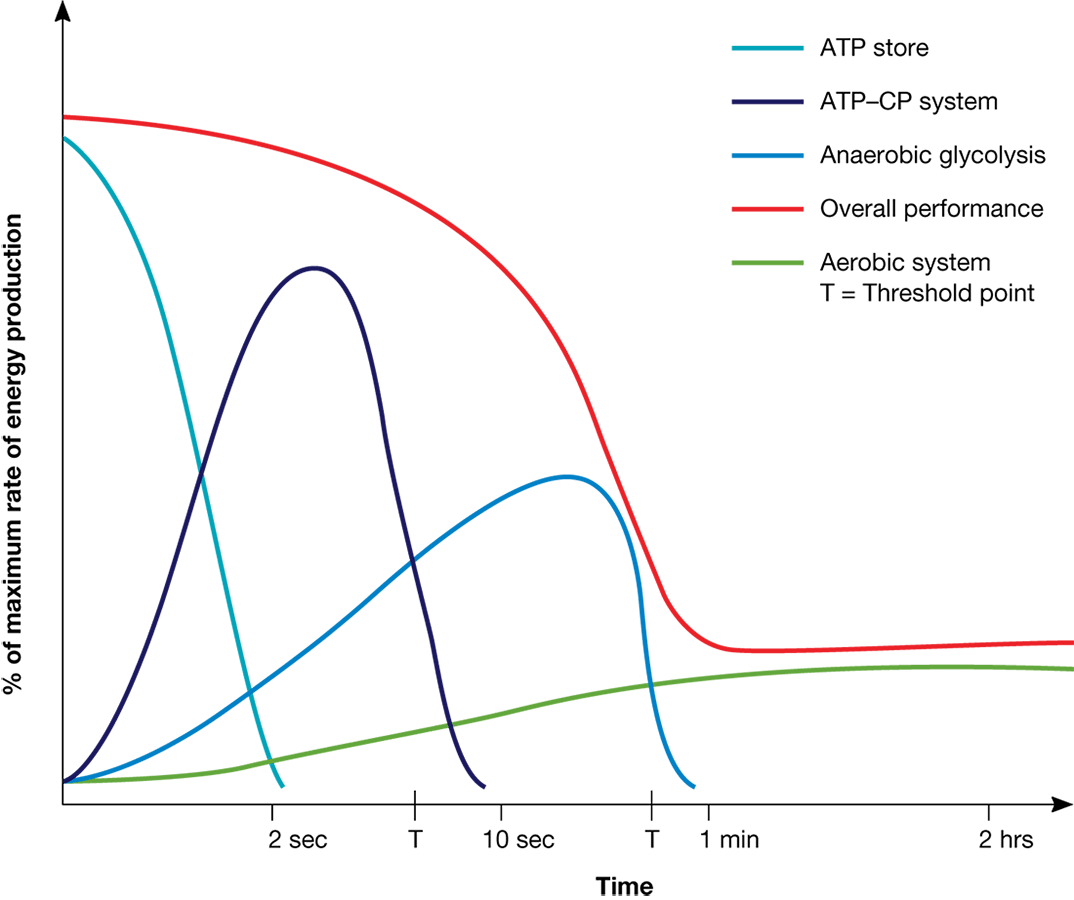Explain the Major Differences Between Aerobic and Anaerobic Energy Production
Aerobic fermentation is a type of reaction that causes the production of energy by completely decomposing the food while anaerobic fermentation is the chemical process of biological compounds. Explain the major differences between aerobic and anaerobic energy production.
What Is Aerobic Exercise.

. Aerobic fermentation occurs in the living organisms. This typically involves any exercise that lasts longer than two minutes in duration. Aerobic fermentation uses oxygen.
What is Aerobic Fermentation. The aerobes use oxygen when it is available but are not solely reliant on it. Aerobic respiration can only occur in the presence of oxygen while anaerobic respiration doesnt require or utilize oxygen in its energy production.
On the other hand anaerobic bacteria yeast cells prokaryotes and muscle cells perform anaerobic respiration. Aerobic means with air and refers to the body producing energy with the use of oxygen. On the flip side anaerobic fermentation occurs outside the living organisms body.
What is the difference between Aerobic and Anaerobic Fermentation. But anaerobic respiration produces lactic acid which is considered a waste by-product. Continuous steady state exercise is performed aerobically.
Anaerobic fermentation does not use oxygen. What is the major difference between aerobic and anaerobic respiration. Without oxygen Occurs in the cytoplasm Fast energy production Small energy storages glucose Produces lactic acid.
Anaerobic means without air and refers to the body producing energy without oxygen. Anaerobic means without oxygen. In aerobic respiration glucose molecules are passed through a chemical reaction chain that produces ATP carbon dioxide and water and ends with oxygen accepting the free electrons that.
Neither system provides sustainable energy for very long. Aerobic Anaerobic fermentation and Anaerobic fermentation both. They have anaerobic methods of energy production.
Aerobic metabolism requires oxygen whereas anaerobic metabolism does not. Haddock B A and C W Jones. Most of the plant and animal cells use aerobic respiration.
Aerobic energy system. 2 The immediate anaerobic energy system. This is useful in tissues which have a high energy demand such as in working muscles in which there is not enough oxygen to produce all the energy needed by using aerobic respiration alone.
In anaerobic respiration when free oxygen is not present hydrogen cannot be disposed of by combination with oxygen. The main difference between aerobic and anaerobic bacteria is the type of final electron acceptor during cellular respiration. The aerobic respiration equation can be derived while understanding the system of respiration.
Anaerobic metabolism cannot continue indefinitely. In contrast aerobic metabolism can continue forever only under theoretical conditions. With oxygen Occurs in the mitochondria Slow energy production Vast energy storages glucose protein fat Does not produce lactic acid.
The breakdown of glucose in the presence of oxygen to produce more amount of energy is called as aerobic respiration. The main difference between anaerobic and aerobic exercise is how intense the activity is aerobic has a lower intensity while anaerobic has a higher intensity. Short-term anaerobic energy system.
Anaerobic respiration also produces energy and uses glucose but it produces less energy and does not require oxygen. The key difference between aerobic and anaerobic fermentation is that aerobic fermentation uses oxygen whereas anaerobic fermentation does not use oxygen. Using the previous graphs explain the physiological mechanisms that are operating on the following parameters during the post-exercise period.
Inhaling oxygen by the cellular system while respiration is aerobic produces carbon dioxide as a product. Oxygen is present in aerobic respiration as the final electron acceptor where an electron and a proton are transferred to oxygen reducing it to water. Immediate anaerobic energy system and.
Aerobic bacteria use molecular oxygen as the final electron acceptor while anaerobic bacteria use other substances as the final electron acceptor. Following are the substantial differences between both kind of respiration. Anaerobic fermentation does not produce ATP molecules.
The difference between them is the way your body uses energy to do them. As we touched on the main difference between aerobic and anaerobic respiration is whether or not oxygen is present. The enzymes used are catalase peroxidase and superoxide dismutase.
Aerobic respiration requires oxygen whereas anaerobic respiration takes place in the absence of oxygen. Aerobic respiration needs oxygen to occur while anaerobic does. Aerobic microorganisms use glycolysis the Krebs TCA cycle and an electron transport chain with oxygen as the final electron acceptor.
Aerobic exercise is cardiovascular conditioning that. The aerobic catabolism of nutrients converted as carbon. Aerobic respiration is more efficient than.
Our bodies can create anaerobic energy in two ways through the. The anaerobic energy system is the energy system of choice for the 100m sprinter. Breakdown of glucose in the absence of oxygen to produce energy is called as anaerobic respiration.
The further differences will be discussed in this article.

What Is The Difference Between Aerobic And Anaerobic Glycolysis Pediaa Com

Aerobic Vs Anaerobic Respiration Venn Diagram Cellular Respiration Venn Diagram Photosynthesis And Cellular Respiration

Aerobic Anaerobic Respiration Medical School Stuff Biochemistry Science Biology

Aerobic Vs Anaerobic Respiration Advanced Ck 12 Foundation

Difference Between Anaerobic And Aerobic Respiration Questions House

Pin On What Is Difference Between Aerobic And Anaerobic Respiration Javatpoint

Energy Systems Aerobic System Ppt Video Online Download

Aerobic And Anaerobic Respiration Major Differences

Aerobic And Anaerobic Respiration Nice Big Picture Diagram Anna Totten Totten B Remind Anaerobic Respiration Medical Laboratory Science Student Biochemistry

Pin On What Is Difference Between Aerobic And Anaerobic Respiration Javatpoint

This Flowchart Shows The Processes Of Anaerobic And Aerobic Respiration The Top Image Shows The Energy Anaerobic Respiration Physiology Anatomy And Physiology

Difference Between Protists And Fungi Characteristics Classification Types Examples Study Biology Protists Biology Notes

Aerobic Vs Anaerobic Respiration Definition 11 Differences Examples

Aerobic And Anaerobic Respiration Major Differences

Energy Systems Part 3 Anaerobic Lactic Glycolytic The Sustainable Training Method

Difference Between Aerobic And Anaerobic Respiration Aerobic Vs Anaerobic Respiration

Energy Production 3 Biochemical Mechanisms Utilized Aerobic Respiration Anaerobic Respiration Fermentation Ppt Download



Comments
Post a Comment